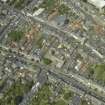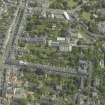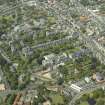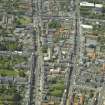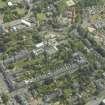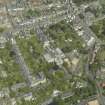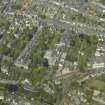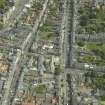St Andrews, South Street, University Library
Library (17th Century)
Site Name St Andrews, South Street, University Library
Classification Library (17th Century)
Alternative Name(s) Old University Library; West Burn Lane; St Mary's College; Department Of Psychology
Canmore ID 93294
Site Number NO51NW 249
NGR NO 51021 16588
Datum OSGB36 - NGR
Permalink http://canmore.org.uk/site/93294
- Council Fife
- Parish St Andrews And St Leonards
- Former Region Fife
- Former District North East Fife
- Former County Fife
NO51NW 249.00 51021 16588 University Library
NO51NW 249.01 51027 16547 1889-90 Extension
NO51NW 249.02 51032 16526 1908 Extension
ARCHITECT: John Gardner, reconstruction, 1764-7
Robert Reid, proposed extension, 1827
Sir Robert R. Anderson, remodelled Senate Room, 1904
Sir Robert Lorimer, Carnegie extension, 1907-9
J Donald Mills, restoration of Old Parliament Hall, 1928-29
REFERENCE:
ST ANDREWS UNIVERSITY LIBRARY:
Plans: Robert Reid, 1827, plans for proposed additions
R S Lorimer, 1907, plans for Carnegie extension
For further details see copy of Inventory to St Andrews Vniversity Plans in NMRS
Publication Account (1981)
St. Andrews boasts the oldest university in Scotland: it received its bull of foundation in 1413. The bull allowed for five faculties - canon law, civil law, theology, medicine and the liberal arts. These faculties had varying fortunes. For example, medicine was taught only spasmodically until the sixteenth century (Nicholson, 1975, 273) and in the poverty-stricken eighteenth century, the university sold medical degrees. St. John's College was the cornerstone of the university, formally established in 1419. Its main teaching sphere was to be arts and theology, but after 1461 the building fell out of use (Cowan, 1976, 232). Possibly St. John's had been superseded by the establishment of St.Salvator's College in mid-century. The stately tower and chapel beneath are part of Bishop Kennedy's original foundation, but the class rooms round about it are modern. The early sixteenth century witnessed the foundation of two more colleges, St. Leonards and St. Marys. St. Leonard's Chapel boasts some early work, but what remains of St. Mary's College has been considerably worked over and modernised (RCAM, 1933, 248-9). The University library was built in 1612 over the foundations of St. John's College. In 1747, the college of St. Leonard united with St. Salvator to help meet the financial needs of the institution.
Information from ‘Historic St Andrews: The Archaeological Implications of Development’ (1981).











































